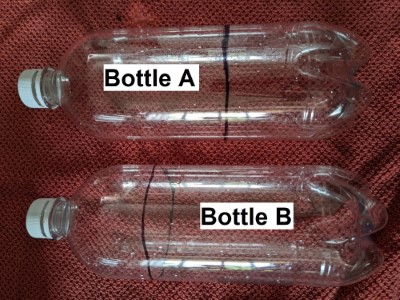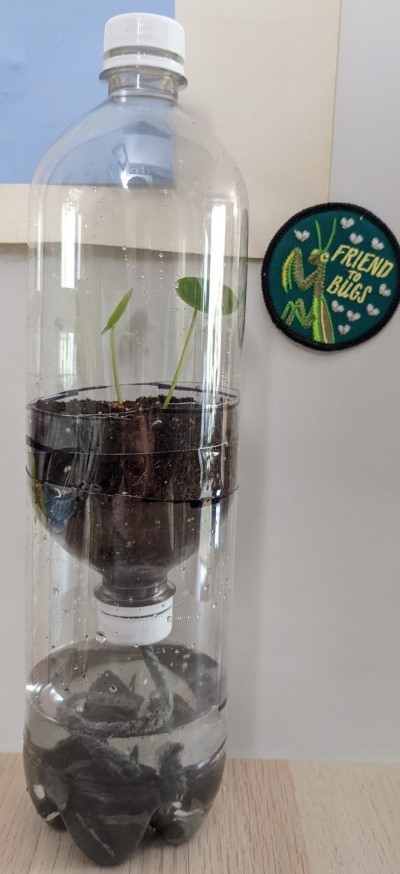Earth Science Week Classroom Activities
From Trash to Terrarium
Activity Source:
National Oceanic and Atmospheric Administration. Adapted with permission.
Our ocean is filled with items that don’t belong there. Huge amounts of plastics, metals, rubber, paper, textiles, abandoned fishing gear, and much more enter the ocean every day, making marine debris one of the most widespread pollution problems facing the ocean and waterways.
The problem of marine debris affects everyone, no matter where they live. Marine debris comes from human activity on land and at sea. Even debris that starts on land can enter waterways, where it is then further spread by water movements and currents. Marine debris can cause a lot of problems for ecosystems, wildlife, and our economy.
The NOAA Marine Debris Program leads national and international efforts to research, prevent, and reduce the impacts of marine debris. One way you can help reduce marine debris is by reducing the amount of trash you create! This activity reuses materials that might otherwise be thrown away.
MATERIALS
• Two matching bottles with straight sides (1 L recommended)
• Thick yarn, rope, or string
• Scissors (Adult supervision required)
• Small plants or seeds
• Soil
• Rocks (optional)

Figure 1.
Credit: Alexandria Gillen/NOAA. Modified by L. Mossa
PROCEDURE
1. Cut a piece of yarn that is approximately the same length as the height of the bottles.
2. With adult supervision, cut each bottle into two pieces each. Cut Bottle A about 2/3 of the way from the top and Bottle B about 2/3 of the way from the bottom (Figure 1). Recycle the bottom of Bottle A.
3. With adult supervision, cut a hole in Bottle A’s cap large enough to push the strand of yarn through the hole. Put the cap with the yarn onto Bottle A. Adjust the yarn so it comes about halfway into Bottle A.
4. Fill the bottom of Bottle B halfway with water (and rocks, if available).
5. Nest Bottle A upside-down into Bottle B with the yarn hanging into the water. You may need to add more water if the yarn does not reach.
6. Fill Bottle A halfway with soil. Add plants and/or seeds to the soil.
7. Secure the top of Bottle B onto the up-turned opening of Bottle A. Now you have made your terrarium (Figure 2). If it isn’t fitting, try cutting a small slit in the wide end and wiggling it on (this may take some adjusting!).
8. Watch your plant grow! The string will pull water from below into the soil, while the top will trap humidity to create suitable conditions for your plant.

Figure 2.
Credit: Alexandria Gillen/NOAA
FURTHER STEPS
1. Use egg cartons as seed-starting nurseries. You can use plastic bags or domed plastic lids from drinks to increase the humidity inside the terrarium.
2. Repurpose t-shirts or socks as plant ties in an outdoor garden. They’re
soft and stretchy to support your tomatoes, peas,
and other leggy climbers while they grow.
3. Reuse food scraps like green onions, carrot tops, celery stems, avocado pits or other plant parts that would otherwise be food waste by planting them in your terrarium.
4. Research a common type of trash found in marine debris. How does it affect the animals living in that waterway? Design and test out ways to reuse this item rather than throwing it away.
ADDITIONAL RESOURCES
Learn more about marine debris at https://marinedebris.noaa.gov/ and explore all of NOAA’s educational resources at www.noaa.gov/education.
NGSS CONNECTIONS
SEP : Planning and Carrying Out Investigations
DCI : ESS2.A: Earth’s Materials and Systems; ESS3.A: Natural Resources
CCC : Cause and Effect
SDG CONNECTIONS
12 : Responsible Consumption and Production
14 : Life Below Water
